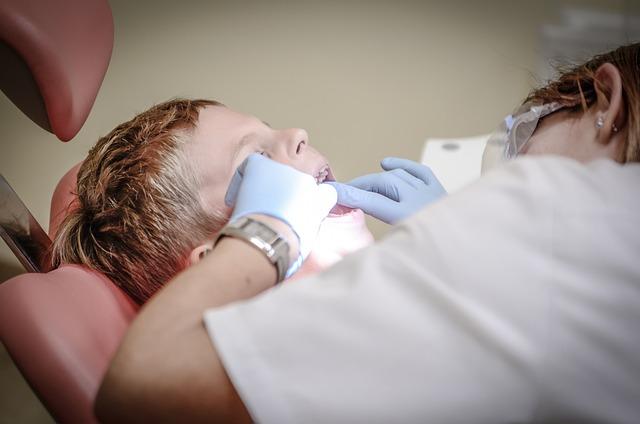Tooth Anatomy 101: Understanding the Three Parts of a Tooth by Name
Have you ever wondered what lies behind that radiant smile of yours? Teeth, the unsung heroes of our oral health, play a vital role in our overall well-being. Understanding the intricate structure of a tooth is essential for maintaining good oral hygiene. In this article, we will delve into the fascinating world of tooth anatomy, shedding light on the three main parts of a tooth and their respective names. So, buckle up and get ready for a journey into the fascinating realm of dental knowledge!
1. The Basics: Unveiling the Three Essential Components of a Tooth
When it comes to understanding the structure of a tooth, it’s essential to familiarize yourself with its three fundamental components. These components work in harmony to allow us to perform everyday tasks such as biting, chewing, and speaking. Let’s take a closer look at each of these components:
- Enamel: The outermost layer of a tooth is called enamel. This hard, mineralized substance acts as a protective shield, safeguarding the underlying layers from decay and damage. With its translucent appearance, enamel also contributes to the tooth’s natural color.
- Dentin: Beneath the enamel lies dentin, a yellowish, calcified tissue that forms the bulk of the tooth. Dentin is less dense than enamel but still provides vital support. It contains tiny channels called dentinal tubules that connect to the tooth’s nerve, allowing sensations such as temperature and pressure to be transmitted.
- Pulp: At the core of the tooth lies the pulp, a soft, living tissue composed of blood vessels, nerves, and connective tissue. The pulp nourishes the tooth during its development and plays a crucial role in detecting pain and sensitivity. It extends from the crown to the tip of the root, providing vitality to the tooth.
Understanding these three essential components is a stepping stone towards better oral health. By taking care of our enamel, dentin, and pulp, we can ensure the longevity and vitality of our teeth for years to come.

2. Enamel: The Resilient Outer Shield Protecting Your Teeth
The enamel is a remarkable and durable outer layer that safeguards your teeth from various external factors. It is a translucent, hard substance that covers the crown of each tooth, providing it with the strength to withstand daily wear and tear. Let’s delve into the incredible characteristics of enamel that make it such a resilient shield for your teeth.
- Exceptional hardness: Enamel is the hardest tissue in the human body, even tougher than bone. Its hardness allows it to withstand the forces exerted during chewing and biting, protecting the inner layers of the tooth from damage.
- Natural defense against acid: Enamel acts as a barrier against the harmful effects of acid erosion. It prevents the acid produced by bacteria and acidic foods from penetrating the tooth structure, thus reducing the risk of tooth decay.
- Translucency for a pearly appearance: The translucent nature of enamel allows light to pass through, giving teeth their pearly white appearance. This adds to the aesthetic appeal of your smile and contributes to overall dental confidence.
However, it is important to note that while enamel is resilient, it is not invincible. Poor oral hygiene, excessive consumption of sugary and acidic foods, and certain medical conditions can weaken and erode the enamel over time. Therefore, it is crucial to maintain good oral hygiene practices and visit your dentist regularly for check-ups to ensure the longevity of this protective outer shield.
3. Dentin: The Supportive Layer Beneath the Enamel
Dentin, the supportive layer beneath the enamel, plays a crucial role in maintaining the structural integrity of our teeth. This mineralized tissue makes up the bulk of the tooth and provides a strong foundation for the enamel above it. Here are a few key points to help you understand the significance of dentin in dental health:
– Dentin is a living tissue: Unlike enamel, which is a non-living substance, dentin contains tiny channels called dentinal tubules that house nerve endings. These tubules allow for the transmission of sensations such as temperature, pressure, and pain. This sensitivity is why dentin is often associated with tooth sensitivity issues.
– Dentin is harder than bone: While dentin is not as hard as enamel, it is still a highly mineralized tissue that provides vital support to the tooth. It is primarily composed of hydroxyapatite crystals, similar to those found in bone, giving it strength and resilience.
– Dentin can regenerate: Unlike enamel, dentin has the remarkable ability to regenerate. When damaged or exposed due to tooth decay or wear, specialized cells called odontoblasts can produce new dentin to repair the tooth. This natural healing process helps to protect the underlying pulp and maintain tooth vitality.
Understanding the role of dentin in our dental health is essential for maintaining strong and healthy teeth. By protecting and nurturing this supportive layer, we can ensure the longevity and functionality of our precious smiles.
4. Pulp: The Vital Core of Your Tooth, Home to Blood Vessels and Nerves
The pulp is an essential component of your tooth, serving as its vital core. Located in the center of the tooth, it plays a crucial role in maintaining its health and functionality. Within the pulp, you’ll find a network of blood vessels and nerves, which are responsible for supplying the tooth with nutrients and transmitting sensory information, respectively.
Here are a few key points to understand about the pulp:
- Protection: The pulp is protected by the hard outer layers of the tooth, namely the enamel and dentin. This shield helps to prevent bacteria and harmful substances from reaching the pulp, ensuring its health and integrity.
- Sensitivity: The pulp contains nerves that are highly sensitive to stimuli, such as temperature, pressure, and pain. This sensitivity serves as an early warning system, alerting you to potential dental issues that may require attention.
- Infection: If the protective layers of the tooth are compromised due to decay, injury, or a cracked tooth, bacteria can enter the pulp, leading to an infection. This can cause severe pain and may necessitate root canal treatment to remove the infected pulp and save the tooth.
Understanding the importance of the pulp helps emphasize the significance of maintaining good oral hygiene practices and seeking prompt dental care when necessary. Regular dental check-ups and cleanings play a vital role in preventing pulp-related issues and ensuring the long-term health of your teeth.

5. Unraveling the Intricacies: An In-Depth Look at Tooth Enamel
Tooth enamel is the hard, outer covering that protects our teeth from daily wear and tear. It is the hardest substance in the human body, even stronger than bone. Understanding the intricacies of tooth enamel is crucial for maintaining good oral health. In this in-depth look, we will explore the composition, structure, and functions of tooth enamel.
Composition:
- Tooth enamel is primarily made up of minerals, with hydroxyapatite being the main component. This mineral gives enamel its strength and durability.
- Enamel also contains a small percentage of organic matter, such as proteins and lipids, which help to maintain its structure and integrity.
Structure:
- Enamel consists of tightly packed crystalline rods called enamel prisms. These prisms are aligned in a specific pattern, which contributes to the strength and resilience of enamel.
- The surface of enamel is smooth and glossy, providing a protective barrier against bacteria, acids, and other harmful substances.
Functions:
- Enamel protects the underlying dentin and pulp from physical and chemical damage.
- It helps to maintain the shape and structure of the teeth, allowing for proper biting and chewing.
- Enamel also plays a role in maintaining the natural color of the teeth.
Overall, tooth enamel is a remarkable substance that plays a vital role in dental health. Taking care of your enamel through regular brushing, flossing, and dental check-ups is essential for preserving the strength and integrity of your teeth.

6. Delving Deeper: Understanding the Role of Dentin in Tooth Structure
Dentin, a vital component of tooth structure, plays a crucial role in maintaining dental health. This calcified tissue lies beneath the enamel and surrounds the tooth’s pulp, providing support and protection. Understanding the functions and properties of dentin is essential for comprehending tooth structure as a whole.
1. Sensitivity Reduction: Dentin acts as a protective barrier between the external environment and the tooth’s nerve endings. It contains numerous microscopic tubules that connect to the dental pulp, allowing sensations to be transmitted. When dentin becomes exposed due to enamel erosion or gum recession, these tubules can be easily stimulated, resulting in tooth sensitivity. Therefore, maintaining the integrity of dentin is vital in reducing sensitivity.
2. Dentinogenesis: Dentin is continuously formed throughout a person’s life. Odontoblasts, specialized cells located at the periphery of the pulp, produce dentin in response to various stimuli such as tooth decay or trauma. This reparative process helps to restore the structural integrity of the tooth and protect the underlying pulp from further damage.
3. Mechanical Support: Dentin provides structural support to the tooth, contributing to its overall strength and resilience. It acts as a cushion against external forces, preventing fractures and other forms of damage. The thickness and density of dentin may vary depending on the tooth’s location within the mouth, with different teeth requiring different levels of support.
In conclusion, dentin plays a vital role in tooth structure, offering protection, sensitivity reduction, and mechanical support. Understanding the intricate functions and properties of dentin is crucial for maintaining optimal dental health.
7. The Pulp: The Lifeline of Your Tooth’s Health and Sensitivity
The pulp of your tooth plays a vital role in maintaining its overall health and sensitivity. It is a soft tissue located in the center of your tooth, consisting of blood vessels, nerves, and connective tissue. Here are some key points to understand about the pulp:
1. Protection and nourishment: The pulp acts as a lifeline for your tooth, providing essential nutrients and oxygen to keep it alive and healthy. It also helps in the formation and repair of dentin, the hard tissue that encases the pulp and makes up the bulk of your tooth.
2. Sensitivity and pain: The pulp contains a network of nerves that can detect sensations like temperature, pressure, and pain. When the pulp becomes inflamed or irritated due to tooth decay, cracks, or trauma, it can lead to heightened sensitivity or intense toothache.
3. Root canal treatment: If the pulp becomes infected or damaged beyond repair, a root canal treatment may be necessary. This procedure involves removing the infected pulp, cleaning and disinfecting the root canal space, and finally sealing it to prevent further infection. It is a highly effective way to save a tooth that would otherwise require extraction.
Taking care of your oral hygiene and seeking timely dental care can help ensure the health and well-being of your tooth’s pulp. Regular dental check-ups, proper brushing and flossing techniques, and avoiding harmful habits like teeth grinding can go a long way in maintaining a healthy pulp and minimizing sensitivity. Remember, a healthy pulp means a healthy tooth!
8. Interconnected Harmony: How the Three Components Work Together in Tooth Function
The three components of tooth function – the enamel, dentin, and pulp – work together in perfect harmony to ensure proper dental health and functionality. Understanding how these components interact is crucial in comprehending the overall functioning of our teeth.
Enamel: This hard, outer layer of the tooth is primarily responsible for protecting the inner layers from physical damage and bacterial invasion. Enamel is the hardest substance in our body and acts as a shield against the forces of chewing and biting. Its smooth surface also assists in preventing the accumulation of plaque and bacteria, reducing the risk of tooth decay and cavities.
Dentin: Situated beneath the enamel, dentin is a porous and yellowish substance that constitutes the majority of the tooth structure. It provides support and stability to the enamel and protects the delicate pulp chamber. Dentin contains microscopic channels called tubules, which are responsible for transmitting sensory stimuli to the nerve endings in the pulp, allowing us to perceive hot, cold, and other sensations.
Pulp: The innermost layer of the tooth, the pulp, is a soft tissue that contains blood vessels, nerves, and connective tissue. Its main function is to supply nutrients and oxygen to the tooth, promoting its growth and vitality. Additionally, the pulp plays a crucial role in tooth sensitivity, as it is connected to the nerve endings in the dentin. It also acts as a defense mechanism, triggering immune responses when the tooth is damaged or infected.
9. The Significance of Tooth Anatomy: Why Understanding the Three Parts is Crucial
The anatomy of a tooth consists of three main parts: the crown, the root, and the periodontal ligament. Understanding these three parts is crucial for various reasons.
1. Function: Each part of the tooth has a specific function that contributes to overall oral health. The crown, the visible part of the tooth above the gum line, is responsible for biting and chewing food. The root, hidden beneath the gum line, anchors the tooth in the jawbone. The periodontal ligament connects the root to the surrounding bone, providing support and stability.
2. Dental Health: Knowing the tooth anatomy helps in maintaining good dental health. By understanding the different parts, you can identify potential issues and address them promptly. For example, a crack in the crown may require dental intervention to prevent further damage. Similarly, an infection in the root can lead to tooth loss if not treated in a timely manner.
3. Dental Procedures: Dentists rely on their knowledge of tooth anatomy to perform various dental procedures. Whether it’s a simple filling or a complex root canal, understanding the three parts of a tooth enables dentists to navigate the intricate structure of the tooth and provide effective treatment. It also helps in explaining procedures to patients, ensuring they have a clear understanding of the treatment plan.
10. Maintaining Dental Health: Tips and Practices for Nurturing Each Element of Your Teeth
Maintaining dental health is crucial for overall well-being. By implementing a few simple tips and practices, you can nurture every element of your teeth and ensure a healthy, beautiful smile.
Here are some effective ways to take care of your dental health:
1. Brushing your teeth regularly: Brush your teeth at least twice a day with a soft-bristled toothbrush and fluoride toothpaste. Pay attention to each tooth’s surface, the gumline, and the back of your mouth.
2. Flossing daily: Flossing removes plaque and food particles from between your teeth and along the gumline. Use a gentle sawing motion and curve the floss around each tooth to reach all the crevices.
3. Eating a balanced diet: Include a variety of nutrient-rich foods in your diet, such as fruits, vegetables, whole grains, and lean proteins. Limit sugary and acidic foods and drinks, as they can contribute to tooth decay and enamel erosion.
4. Avoiding tobacco products: Smoking and chewing tobacco can lead to a host of dental problems, including stained teeth, gum disease, and oral cancer. Quitting tobacco is essential for maintaining optimal dental health.
5. Regular dental check-ups: Schedule regular dental visits every six months for professional cleanings, examinations, and preventive care. Your dentist can identify any potential issues early on and provide appropriate treatments.
Remember, consistent oral hygiene practices and healthy lifestyle choices are key to nurturing each element of your teeth. By following these tips, you can safeguard your dental health and enjoy a lifetime of strong, beautiful teeth.
Frequently Asked Questions
Q: What are the three parts of a tooth?
A: The three parts of a tooth are the crown, the neck, and the root.
Q: What is the crown of a tooth?
A: The crown is the visible part of the tooth that is covered by enamel. It is the part that we see when we smile.
Q: What is the neck of a tooth?
A: The neck of a tooth is the part that connects the crown to the root. It is usually located just below the gum line.
Q: What is the root of a tooth?
A: The root of a tooth is the part that is embedded in the jawbone. It anchors the tooth in place and provides support.
Q: What is the function of the crown?
A: The crown of a tooth is responsible for chewing and grinding food. Its shape and structure are designed to facilitate this process.
Q: Why is the neck of a tooth important?
A: The neck of a tooth is important because it serves as a protective barrier against bacteria and other harmful substances. It helps to keep the tooth healthy and prevents decay.
Q: What is the significance of the tooth root?
A: The root of a tooth plays a crucial role in keeping the tooth stable and secure. It also houses the nerves and blood vessels that supply nutrients and sensation to the tooth.
Q: How does understanding tooth anatomy benefit us?
A: Understanding tooth anatomy allows us to better care for our oral health. It helps us recognize potential problems, such as cavities or gum disease, and seek appropriate treatment in a timely manner.
Q: Can tooth anatomy vary from person to person?
A: While the basic structure of a tooth remains the same, there can be slight variations in tooth anatomy from person to person. These differences may be due to genetics or individual characteristics.
Q: Are there any other important aspects of tooth anatomy to consider?
A: In addition to the three main parts of a tooth, it is also important to consider the enamel, dentin, and pulp. Enamel is the hard outer layer that protects the tooth, dentin is the layer beneath the enamel that provides support, and pulp is the soft tissue at the center of the tooth containing nerves and blood vessels.
Q: How can we maintain good oral health based on tooth anatomy?
A: Maintaining good oral health involves regular brushing and flossing, along with routine dental check-ups. Understanding tooth anatomy helps us target areas that may need extra attention and take preventive measures to keep our teeth and gums healthy.
To Conclude
In conclusion, understanding the three parts of a tooth by name is crucial for maintaining optimal dental health. By familiarizing ourselves with the enamel, dentin, and pulp, we can better appreciate the intricate structure of our teeth and take necessary steps to protect them. The enamel, as the outermost layer, acts as a shield against decay and damage. Below it lies the dentin, providing support and transmitting sensations to the nerves. Finally, the pulp houses the blood vessels and nerves, ensuring the tooth’s vitality. By recognizing these key components, we can communicate more effectively with our dentists, make informed decisions about oral hygiene, and ultimately enjoy a healthier smile for years to come. So, let’s embrace this knowledge and take charge of our dental well-being.






